On Tuesday, we traveled to the fortress city of Terezín. Built in the late 18th Century to protect Bohemia from Prussian forces arriving from the north, the fortress functioned for many years as a garrison town and prison for military and political convicts. The river Ohře divides the city into the Small Fortress (right) and the Main Fortress (left).

During World War II, the Nazi German occupation in the Czech lands transformed Terezín into a giant prison and ghetto for Czech and European Jews.
As Ludmila Chládková writes, “In the Small Fortress as early as 1940, the Nazis established a police prison of the Gestapo. In the town itself (the former Main Fortress), a transitional camp was established in late 1941 for Jewish prisoners, called by the Nazis ‘Ghetto Theresienstadt.’ Some tens of thousands of people died here, the majority however perished after having been deported from Terezín to Ghettos and extermination camps in the East.”
Shortly after the end of the Second World War, the government of the Czechoslovak Republic created the Terezín Memorial to conserve and preserve the site as it was during the Nazi occupation. The Memorial is made up of a collection of monuments, which we visited with our tour guide, Svetlana.
We began at the Small Fortress, which served as a prison of the Prague Gestapo for the opponents of the Nazi regime from 1940 – 1945.

Pictured below is the National Cemetery outside the Small Fortress.

From the Terezín Memorial website:
“The National Cemetery presently contains 2,386 individual graves (both urns and inhumations). Thousands more of the dead of the Small Fortress, Terezín Ghetto and Litoměřice forced labour camp, as well as of those who came to Terezín at the end of the War in the death march and death transports, are interred in the mass graves marked by five pylons. In all, the remains of some 10,000 victims lie within the National Cemetery.”

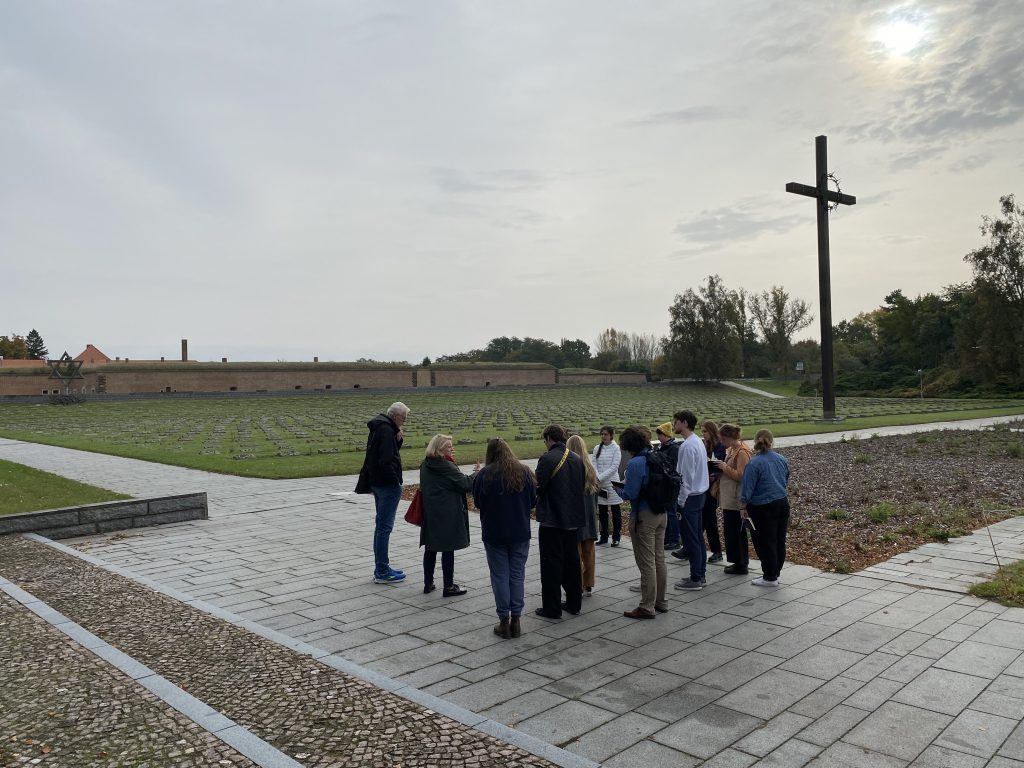
Here we are approaching the entrance to the Small Fortress.


Inside the Small Fortress, we observed former guard offices and prison cells, including the shower room, sick room, hospital, and execution place.



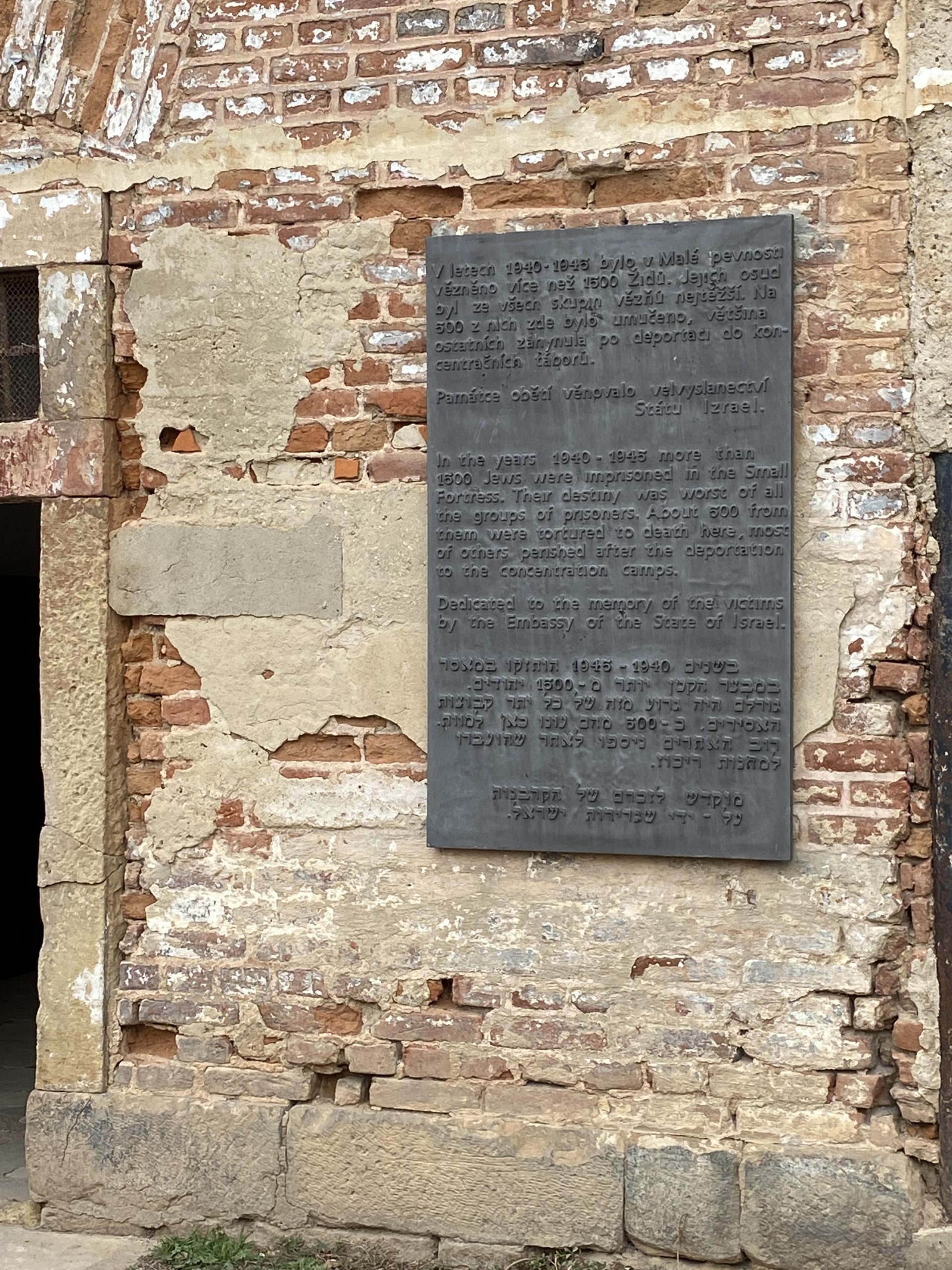
We learned that at any given time, roughly 1,500 prisoners had to share only one small shower room and tiny sleeping quarters.




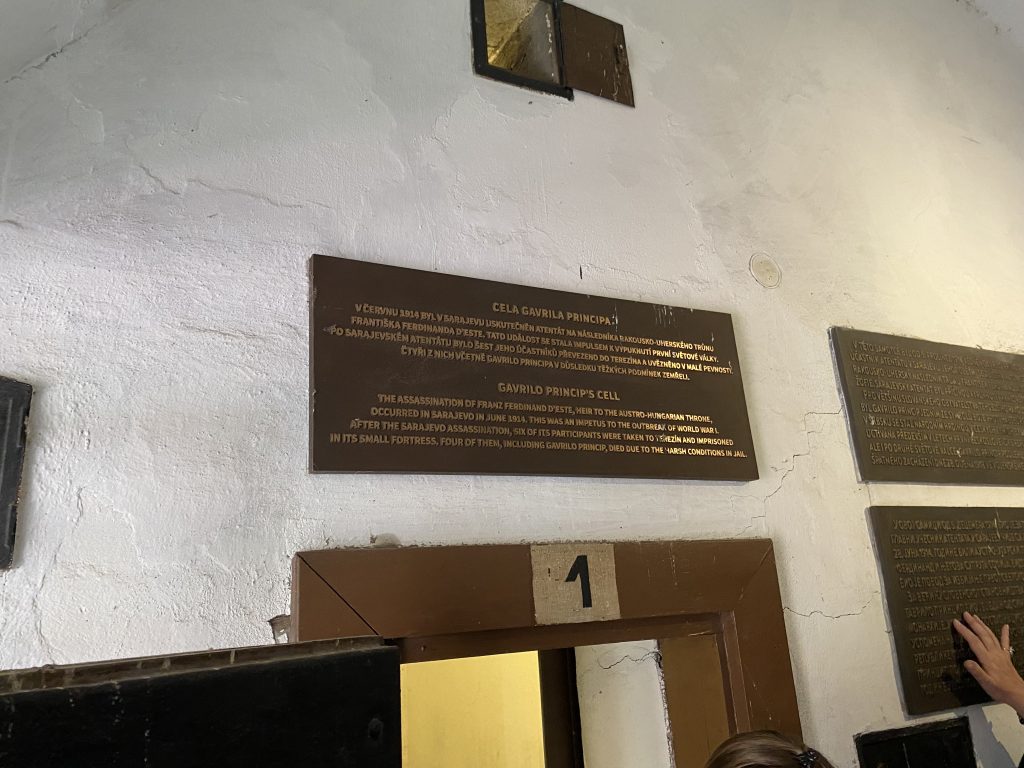
The Small Fortress has many long corridors within the fortification walls. We walked through one of the corridors to the former execution grounds.
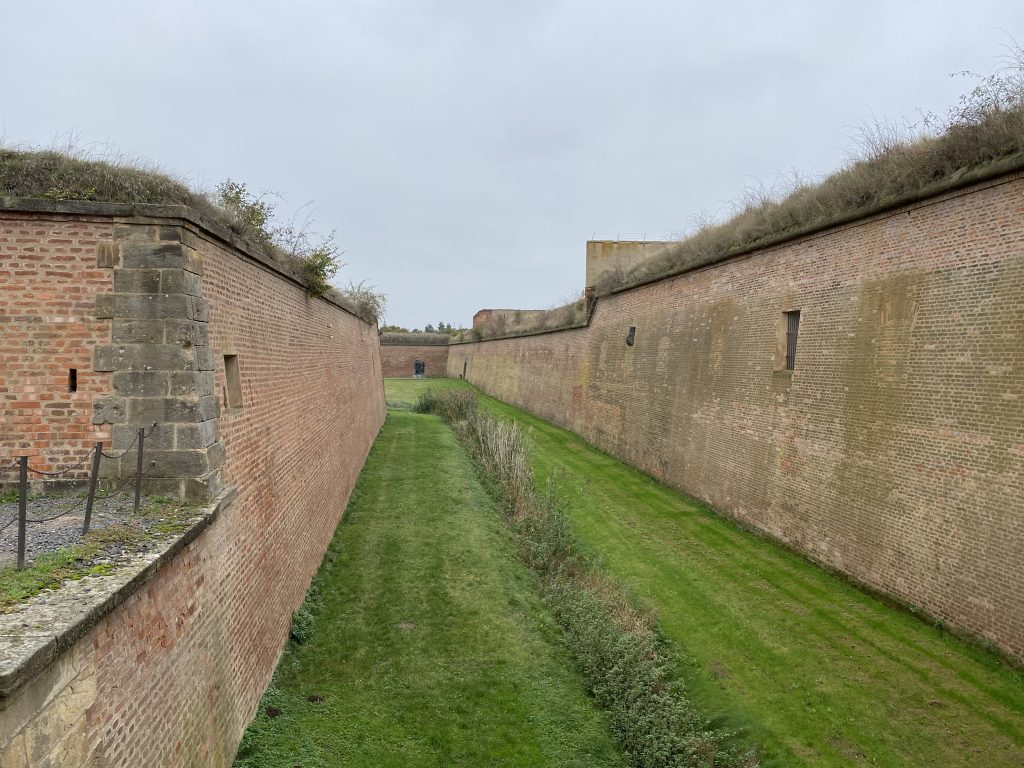



After the Small Fortress, we traveled to the Main Fortress, where the city of Terezín remains to this day inside the old fortification walls.
From 1941 – 1945, the Main Fortress was used as a Jewish ghetto and deportation base by the Nazis. As Ludmila Chládková writes, “The first transport arrived in Terezín from Prague on November 24, 1941 — called the “Aufbaukommando,” consisting of 324 men whose task it was to prepare the town for the arrival of a great number of prisoners. . . Before long, over 7,000 persons were deported to Terezín from Prague and Brno . . . In 1942, mass transports of Jews from various towns in Bohemia and Moravia started arriving. . . In all, over 155,000 prisoners passed through the Terezín Ghetto.”


After lunch, we made our way to the Terezín Ghetto Museum inside the fortress town.
The Ghetto Museum was opened in the former town school in 1991. During the years that Terezín was active as a ghetto, the building served as a home for Jewish boys aged 10-15 years old.

The exhibition on the ground floor and mezzanine is dedicated to all of the children who lived in the ghetto. It features the names of children on the hall walls as well as their poems and drawings of life inside the ghetto.

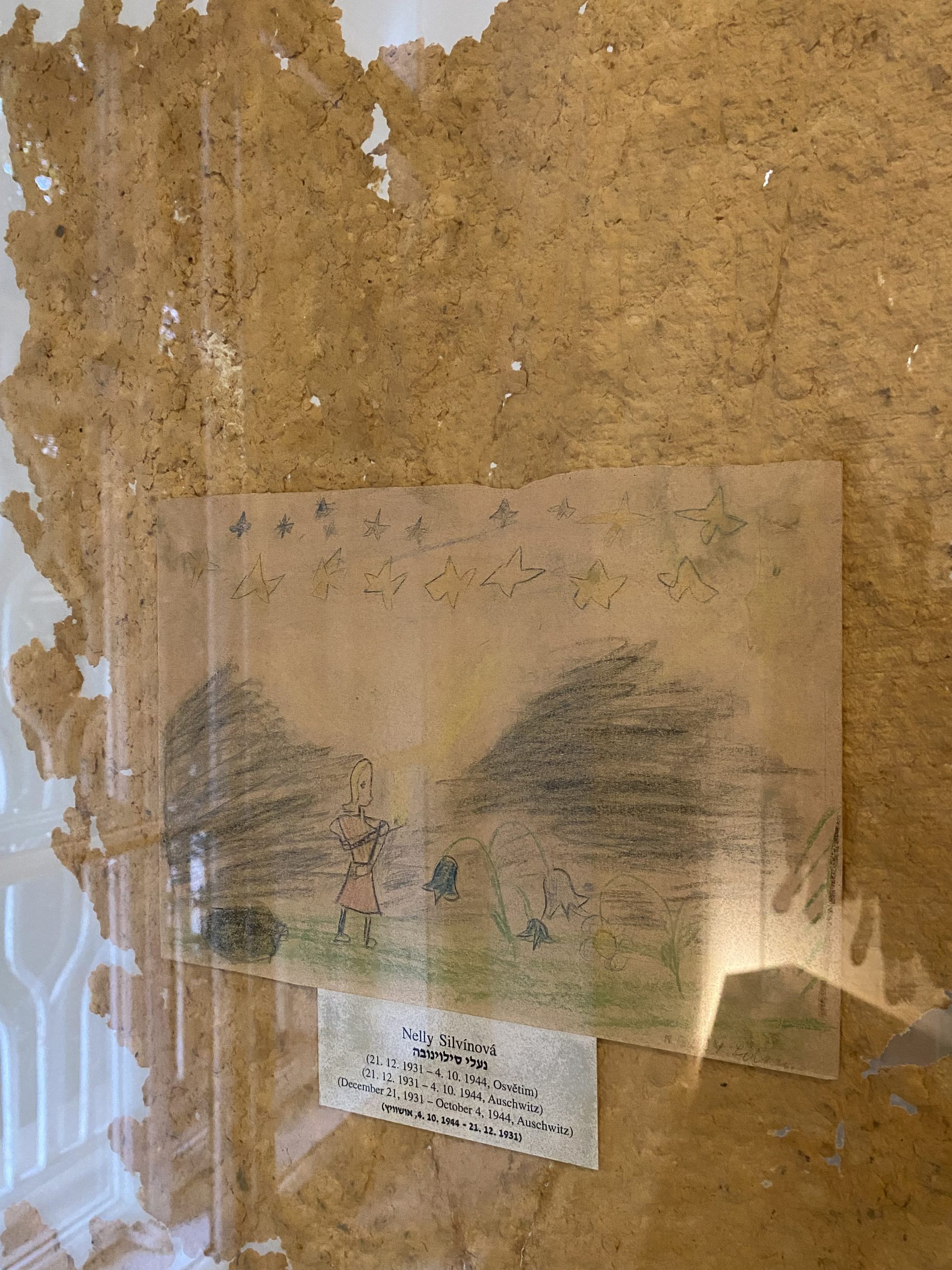
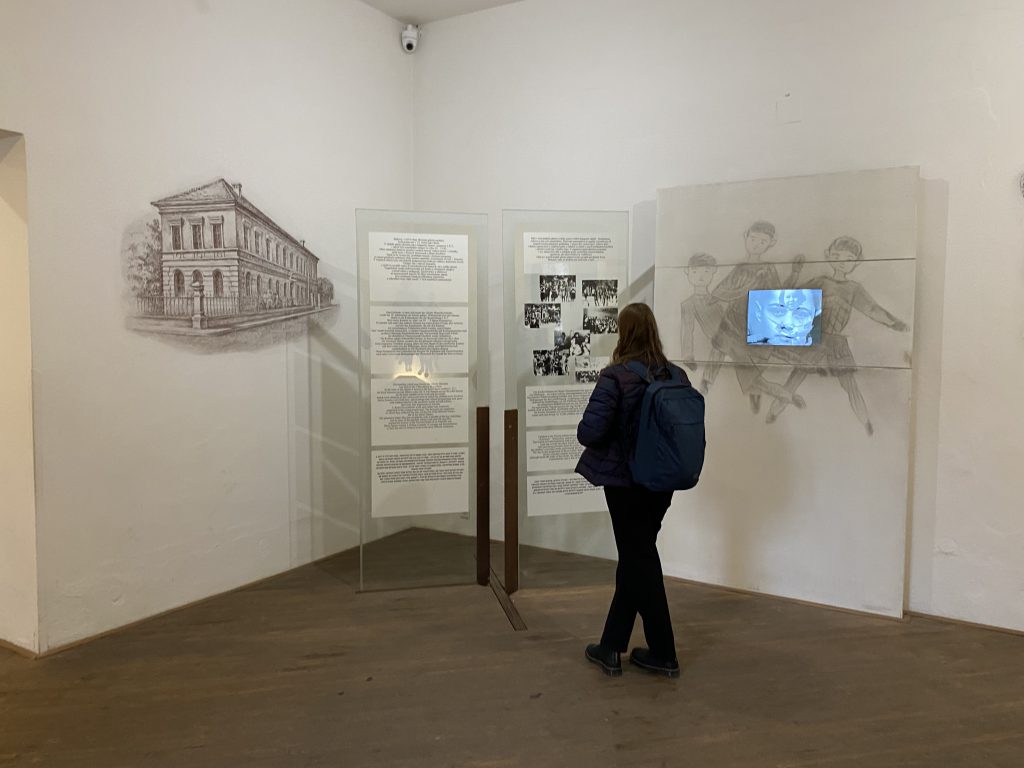






Upstairs on the first floor, the exhibition describes the beginning of the persecution of Jews from the Czech lands and beyond, the establishment of the ghetto, life inside the ghetto, transports, and extermination camps in the East.
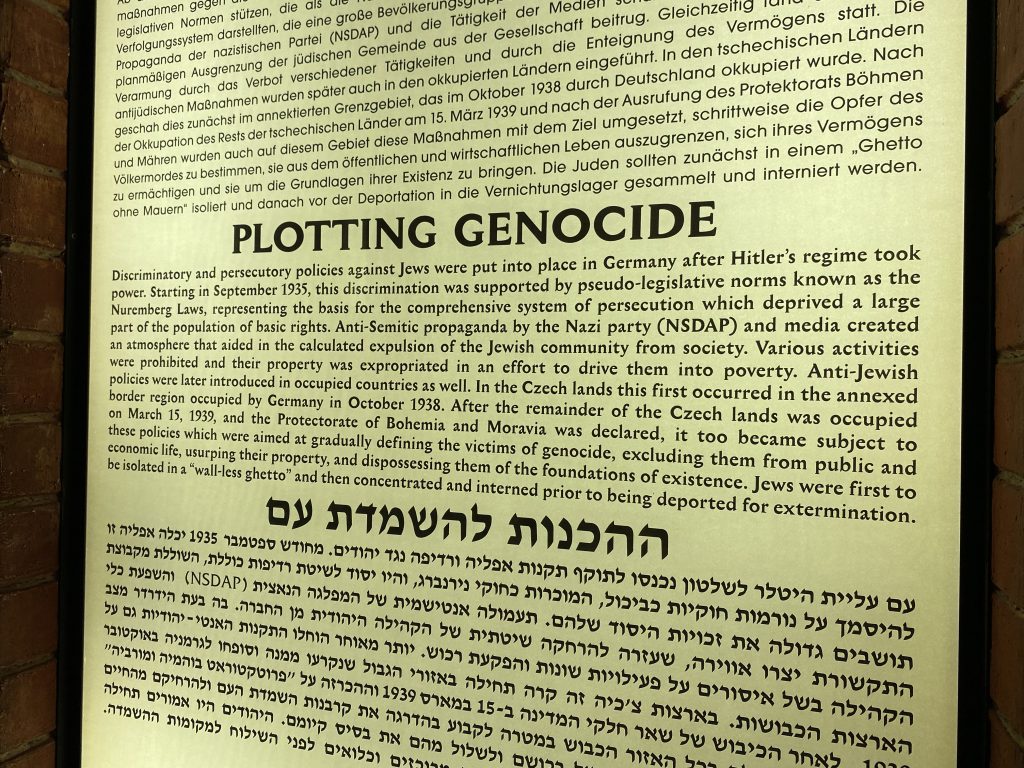




Next, we visited the Magdeburg barracks, a former army barracks that were used as a seat of so-called “Jewish self-government” during the years of the ghetto.
Here Svetlana is describing the inhumane living conditions inside the barracks, which also functioned as a home for many of the elderly Jews inside the ghetto.


Inside the barracks we saw a replica of a prison dormitory from the ghetto. Then, we spent some time in the exhibition “Art Against Death,” which showed works of music, art, and literature made by Jewish prisoners inside the Ghetto.
Many of the artworks, poems, and pieces of music reflect life inside the ghetto.









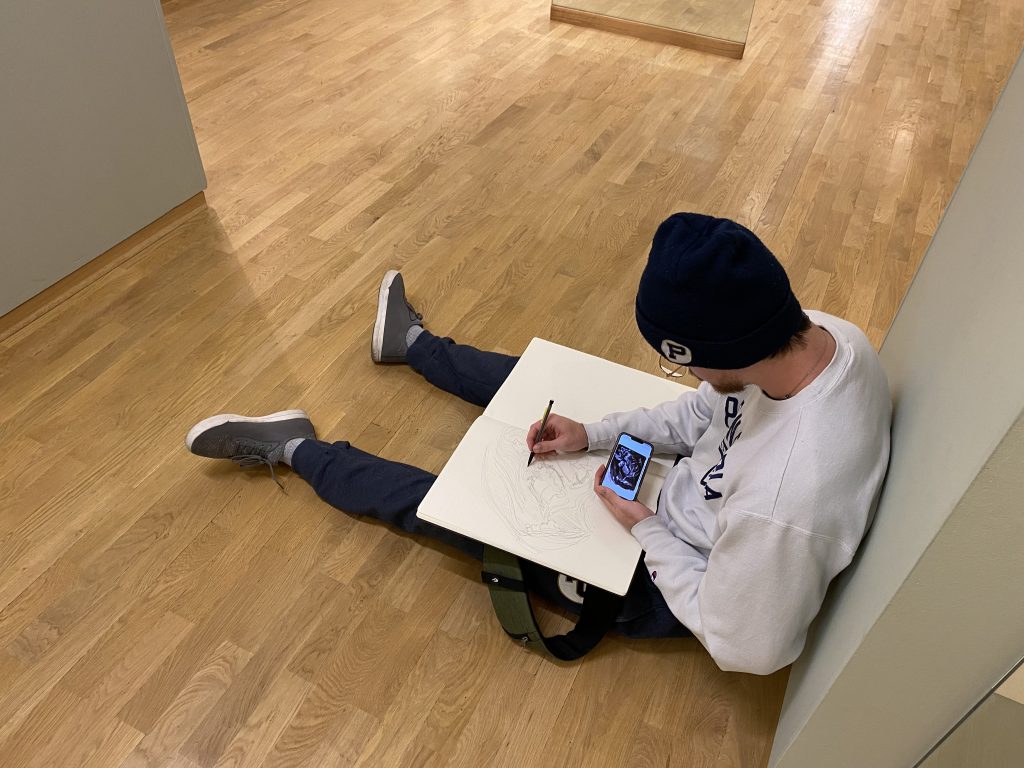

Our second last stop was the hidden prayer room and Zionist synagogue from the time of the Terezín ghetto, as well as the replica of an attic living quarters.
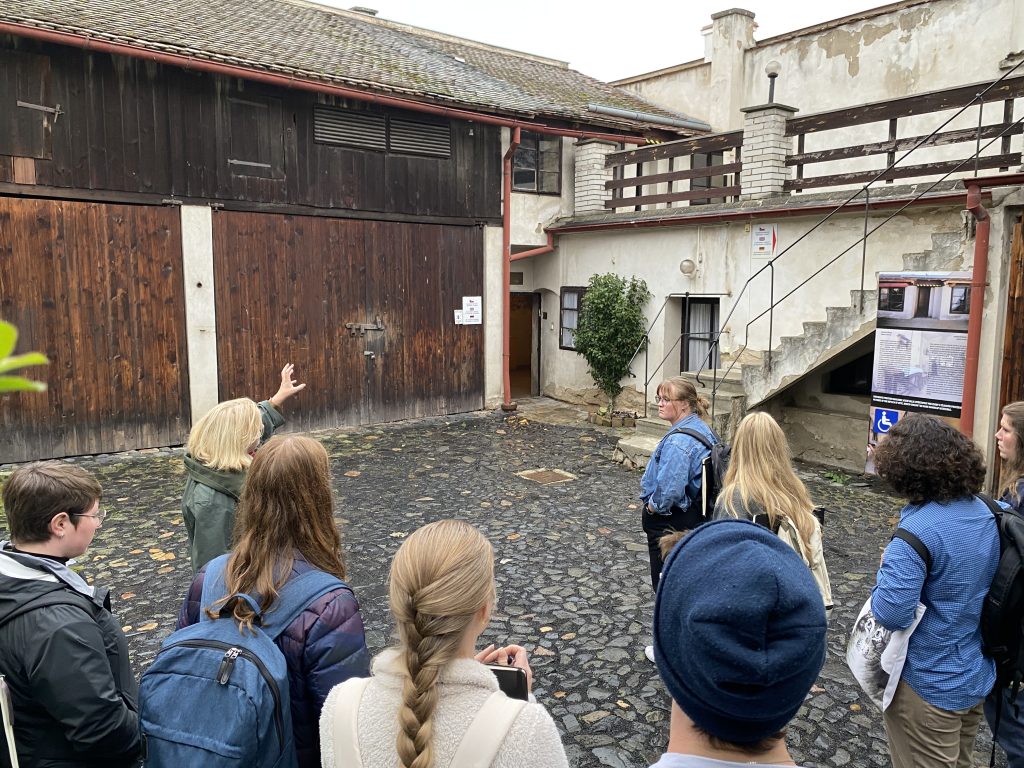

We ended the day at the crematorium, tactically built by the Nazis to disguise its true purpose.



Leave a Reply